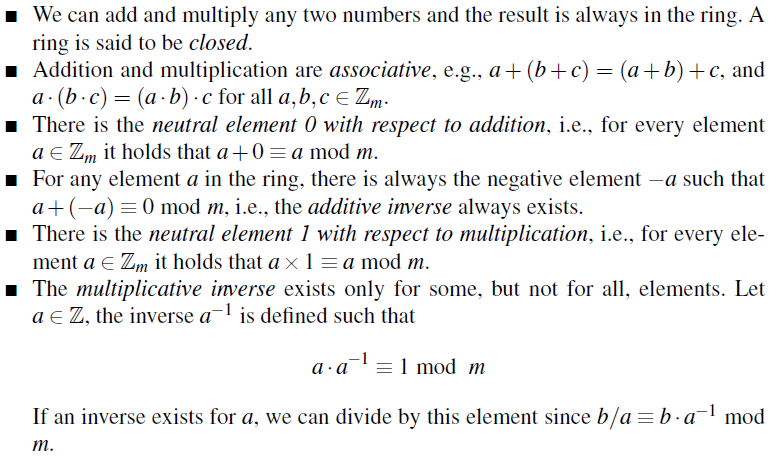After studying the properties of modulo reduction we are now ready to define in more general terms a structure that is based on modulo arithmetic. Let’s look at the mathematical construction that we obtain if we consider the set of integers from zero to m−1 together with the operations addition and multiplication:
Let’s first look at an example for a small integer ring. Let m=9, i.e., we are dealing with the ring Z9 ={0,1,2,3,4,5,6,7,8}.
Let’s look at a few simple arithmetic operations:
6+8 = 14 ≡5 mod 9
6×8 = 48 ≡3 mod 9
More about rings and finite fields which are related to rings is discussed later. At this point, the following properties of rings are important:
Why inverse doesnt exists everytime? Lets have a ring {0,1,2,3,4,5,6,7,8,9}. m=9, a=2, a to -1 = ?
You would think that 2 x 2 to -1 = 1 mod 9 is right. But it is not!! because 2 to -1 is 0.5 and that is not in the ring!! You have to find different number from the ring and not always you are able to find one. So thats why inverse doesnt exist every time. This time you can put there number 5, i.e. 2 x 5 =1 mod 9. But what about
6 x ?=1 mod 9…
There is no inverse function for this number. This leads to some conclusion. In integer rings you can add, subtract and multiply. But you cannot always divide (or multiplicative inverse). So integer rings got 3 operators.


